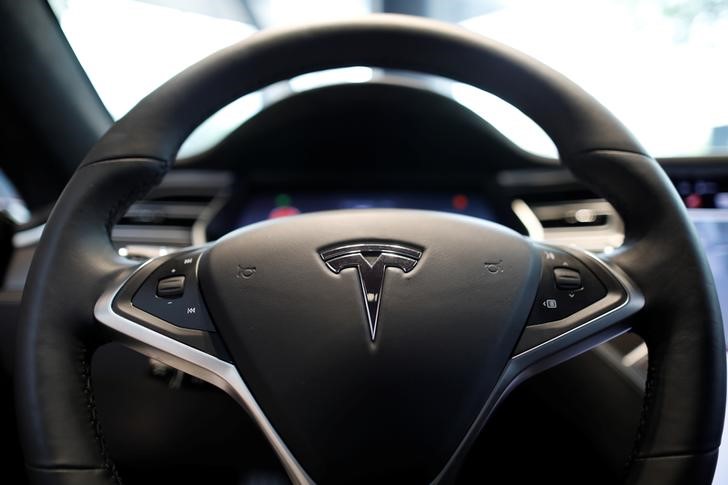This post was originally published on this site

Bernstein reiterated an Underperform rating and $150.00 price target on Tesla (NASDAQ:TSLA) after breaking down key data points from the EV maker’s 2023 Investor Day.
“On 1st March, Tesla held its Investor Day.” wrote Bernstein analysts. “The company provided select quantitative updates, and with some simple math, we found the implications of several of them interesting:”
Tesla produced its 4 millionth car on its investor day. To this point, Tesla had produced 3.73M cars in its history, pointing to about 273K cars produced this quarter, ~64% of consensus production estimates (428K cars for Q1). Given that the quarter was ~2/3 complete at the time, and production at Berlin and Austin continues to ramp, this suggests that Tesla is on track to meet consensus production expectations for the current quarter.
Tesla said that they currently employ around 65K manufacturing workers. Assuming 40hr work weeks and 440K run-rate production in Q4, this implies ~77 hours of labor per car, above the industry best practice of ~40hrs. The company has acknowledged that it does not yet feel it is at “best practice” for manufacturing labor. Shaving 20-30 hours of production labor from its cars could save $1000+ per car.
Tesla disclosed 1.5M weekly Supercharging sessions. The company averaged ~36K Supercharging stations in 2022, implying 41.7 sessions per week per supercharger. Assuming the average session is ~30 mins implies that each station was utilized for 3 hours. Tesla also disclosed that it provided 9 TWh of charging in 2022, but Bernstein has a hard time reconciling the two numbers. Further assuming the average charging session charged ~40 kWh, and the average price was $0.25/kWh, this implies ~$780M in revenue or ~13% of segment revenue for Services and Others.
The relatively low utilization vs. revenue upside might be why Tesla is opening its chargers for all EVs. Assuming Tesla’s charging footprint is 50% in the US and 50% in Europe, also assuming expanding access to non-Tesla EVs increases revenue proportionally to the volume share of non-Tesla cars multiplied by the share of chargers affected, and given ~2/3 volume share in the US and ~15% in Europe, this would imply $1.2B in revenue upside, or ~30% segment growth to Services and Other.
Tesla’s CFO said there has been a 30% cost reduction in the Model 3 since 2018, pointing to a ~7% cost reduction per year. Tesla’s car prices have been cut 9%-10% since Q4; if auto COGS fall 7% this year from Q4 levels, this points to Auto GMs being pressured by 700 bps from Q4 levels. Notably, Tesla has cut prices two additional times for Model 3 since its initial price cut in January, and the car still appears to have no material backlog in any major market, suggesting potential further cuts.
Tesla gave its long term capex targets of $150B-$175B. Technically, if Tesla grew at 50% per year (its current vehicle target) it would achieve its long term target of selling 20M cars per year by 2029. Bernstein believes that such a timeline is unrealistic. However, even if Tesla grew at “only” 30% per year, it would still achieve 20M cars in less than 10 years.
Bernstein analysts wrote in a note, “As investor sentiment has rebounded, bulls have espoused the argument that Tesla has a durable structural cost advantage, which will allow it to capture outsized volume and dominate the EV market with favorable economics over the longer term. We believe that in the near-to-medium term, Tesla is unlikely to ramp up new models fast enough to meet volume expectations of 2.4M in 2024, especially since the next-gen platform appears to still be in the design phase. Moreover, we believe that price cuts underscore the highly competitive nature of the auto market, where sustained high margins and high volume is unprecedented, and which we believe is necessary to justify Tesla’s premium valuation.”
Shares of TSLA are down 2.4% in premarket trading on Thursday.

